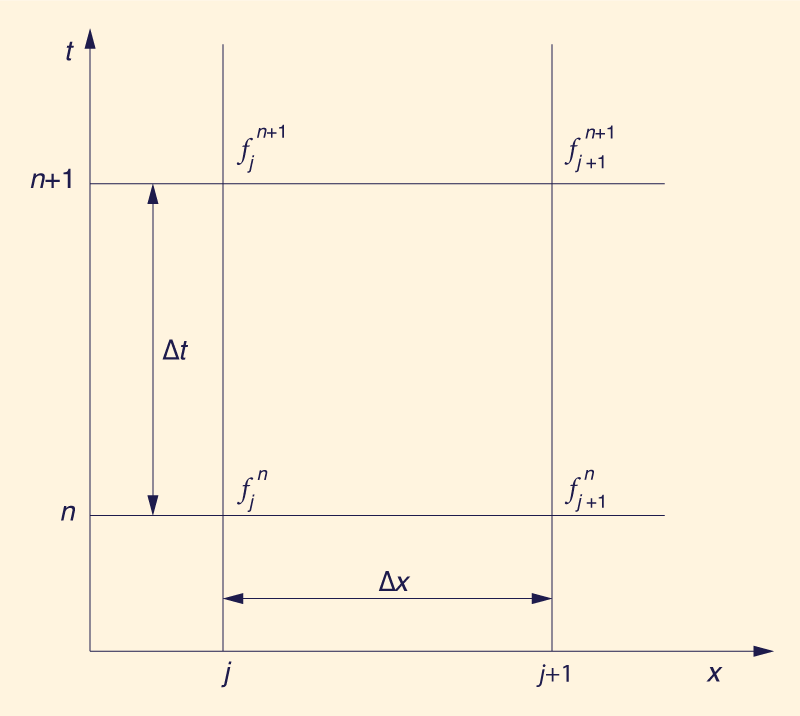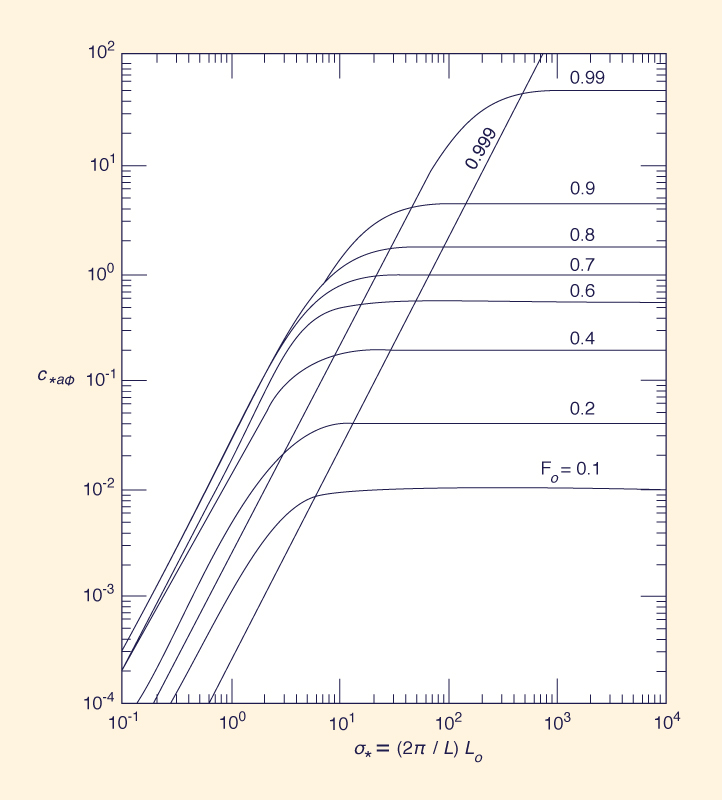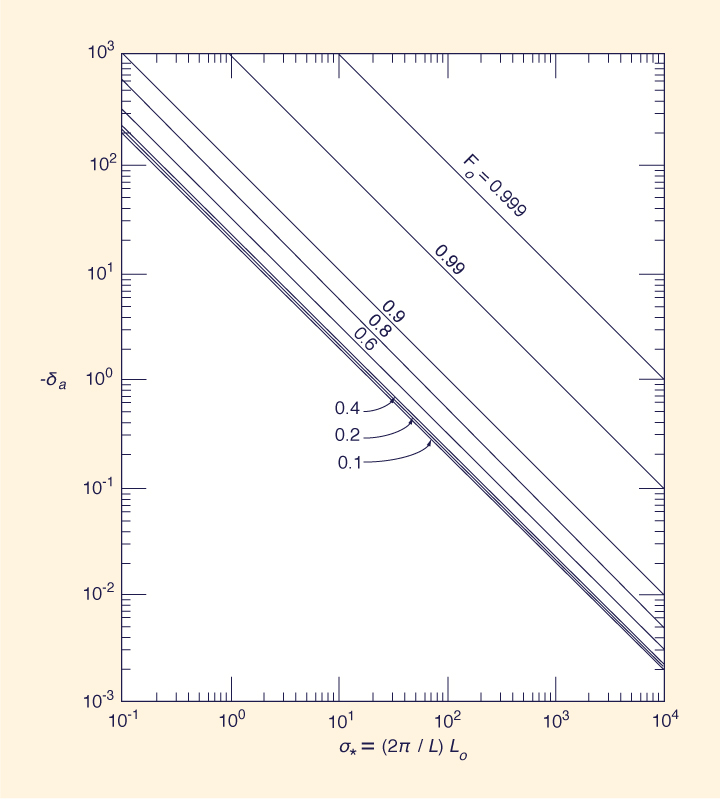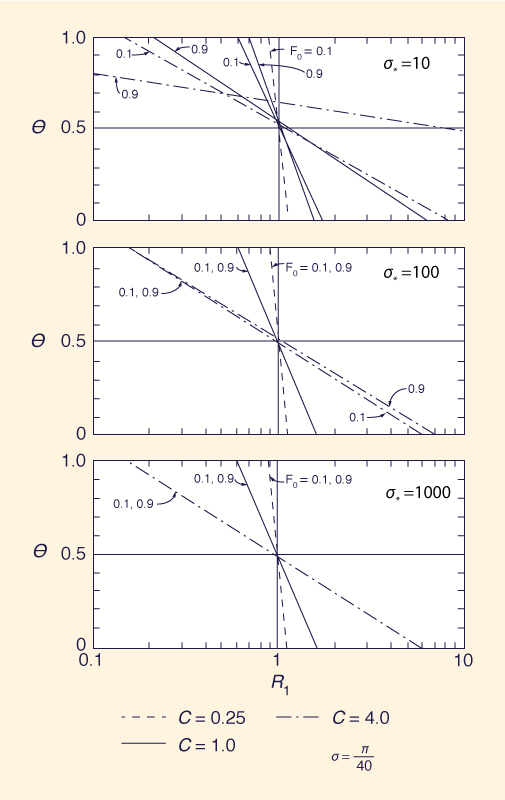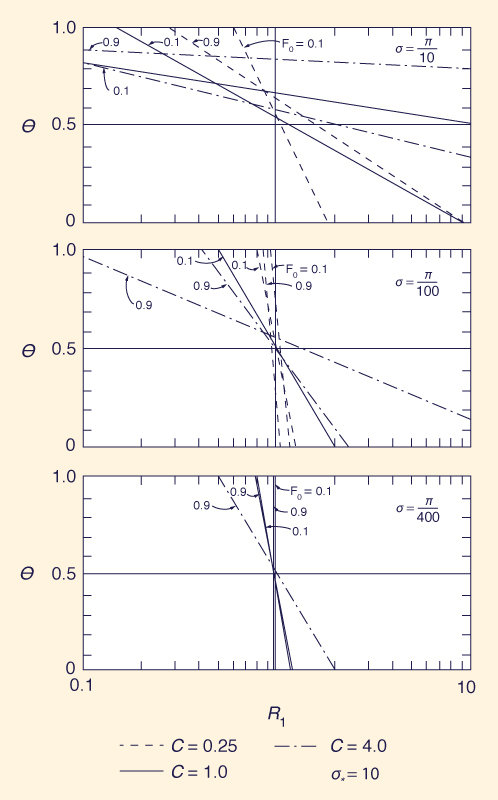1. INTRODUCTION
The essential feature of a numerical model is the replacement of a derivative such as ∂ƒ/∂s by a ratio of finite differences such as Δƒ/Δs. In doing so, the numerical model must satisfy certain requirements of stability and convergence. Stability refers to the ability of the numerical scheme to inhibit the generation of error growth. Convergence is a measure of the smallness of the discretization error.
In practice, stability is a necessary condition for model operation since an unstable model is of little or no use. In numerical models, stability is usually achieved at the expense of convergence. Therefore, convergence is the focal issue: Once the model is shown to be stable, it then becomes necessary to assess its convergence properties.
The von Neumann method (5) for the systematic analysis of stability and convergence has been recognized in the literature (8) as a powerful analytical tool to study the properties of numerical models. The method will be applied herein to study the convegence properties of implicit numerical models of bed transient propagation in subcritical alluvial channel flow. Cunge and Perdreau (2), Mahmood and Ponce (4), and Ponce, et al. (7) have developed numerical models of bed transient propagation. Cunge and Perdreau studied the numerical properties of their model but fell short of generalizing their findings with respect to channel friction and sediment transport. The analysis presented herein shows that it is possible to isolate the relevant friction and transport parameters, thus providing an increased understanding of the convergence properties of implicit bed transient models.
2. GOVERNING EQUATIONS
The governing equations of one-dimensional alluvial channel flow are: (1) The water continuity; Water continuity equation:
Sediment continuity equation:
Equation of motion:
in which u = mean velocity; h = water surface elevation; z = channel bed elevation;
Two supplementary equations describing the bottom friction and bed material transport are necessary. The bottom friction can be expressed by a Chézy-type relationship of the following form:
in which ƒ is a dimensionless friction factor defined as follows:
and C = Chézy coefficient. For steady uniform flow, the bottom shear stress is:
Likewise:
in which So = bottom slope. Therefore, from Eqs. 6 and 7:
in which Fo is the steady uniform flow Froude number, defined as follows:
The bed material transport rate is modeled by a Colby-type (1) relationship of the following form:
in which k and m are empirical bed material transport parameters.
3. SIMPLIFIED EQUATIONS
In flow well in the subcritical range (Fo ≤ 0.6), the alluvial bed transients travel downstream with a celerity that is several orders of magnitude smaller than that of the water surface transients.
Substituting Eq. 10 into Eq. 2, and expressing u in terms of q and d
Operating on Eq. 11:
Substituting Eq. 10 into Eq. 12
Dividing by u ( 1 - p ) ρs g
in which cb = bed material concentration in parts per unity, defined as
In Eq. 14, expressing u in terms of q and d, and d in terms of h and z
Substituting Eq. 4 into Eq. 3
In Eq. 18, expressing u in terms of q and d, and d in terms of h and z
4. LINEAR STABILITY ANALYSIS
Equations 16 and 18 must satisfy both the equilibrium flow for which h = ho, z = zo, cb = cbo, and
Substitution of the perturbed variables in Eq. 16 yields the following equation:
in which:
From Eqs. 9, 10 and 15:
Therefore:
in which φ is a composite bed material transport parameter defined as follows:
Substituting Eq. 22 into Eq. 19:
Substitution of the perturbed variables in Eq. 18 yields the following equation:
in which:
5. ANALYTICAL SOLUTION
The solution of the system of Eqs. 24 and 25 is postulated in the following exponential form:
and
in which:
and
in which L = wavelength; T = wave period; and h* and z* are dimensionless amplitude functions.
The dimensionless celerity, c*, of a sinusoidal disturbance is defined as follows (6):
The logarithmic decrement, δ(6), is defined as follows:
The substitution of Eqs. 27 and 28 into Eqs. 24 and 25 results in a homegeneous system of linear equations in the unknowns h* and z*. The nontrivial condition for the determinant of the coefficient matrix leads to a transport-normalized dimensionless celerity, c*aφ, expressed as follows:
and a logarithmic decrement, δa, expressed as follows:
Figures 1 and 2 show the transport-normalized dimensionless celerity, c*aφ, and logarithmic decrement, δa, as a funtion of the equilibrium flow Froude number, Fo, and the dimensionless wave number, σ*, in subcritical flow.
6. NUMERICAL SOLUTION
The four-point implicit scheme of Preissmann (3) is used to discretize the governing equations. The finite difference equations are of the following form (Fig. 3):
in which ƒ(x,t) = a dependent variable; Δx = space interval; Δt = time interval; and θ = weighting factor of the scheme. Let us call η = h' and ζ = z', and Eqs. 24 and 25 convert to:
Substituting Eqs. 39-41 into 42 and 43 yields:
The substitution of Eqs. 27 and 28 into Eqs. 44 and 45 yields:
in which:
and
Equations 46 and 47 constitute a homogeneous system of linear equations in the unknowns h* and z*. For the solution to be nontrivial, the determinant of the coefficient matrix must vanish. This leads to:
in which C is the bed transient Courant number defined as follows:
Since:
Equation 52 reduces to:
Solving Eq. 55 for E:
in which:
In Eq. 56, expressing β* into its real and imaginary components
it follows that:
and
The dimensionless celerity of the numerical solution, c*n, is defined as follows:
Since
and defining
Equation 63 reduces to the following:
The logarithmic decrement of the numerical solution, δn, is defined as follows:
Equations 66 and 67 enable the calculation of the propagation celerity, c*nφ, and logarithmic decrement, δn, of the four-point implicit numerical analog of Eqs. 2 and 3, as a function of:
7. CONVERGENCE ANALYSIS
The convergence analysis is based on the following ratios:
The value R1 is the attenuation ratio and R2 is the translation ratio. For (δn - δa) > 0, R1 > 1, leading to numerical amplification; for (δn - δa) < 0, R1 < 1, leading to numerical attenuation. For R2 > 1, the numerical translation is greater than the physical translation; for R2 < 1, the numerical translation is smaller than the physical translation. For R1 = R2 = 1, there is an exact coincidence between analytical and numerical solutions.
Figures 4 and 5 show the attenuation ratio, R1, as a function of Fo, σ*, α, C and θ. In Fig. 4, α is kept constant and equal to π / 40; in Fig. 5, σ* is kept constant and equal to 10. Figures 4 and 5 show that increasing σ* and decreasing Fo, α and C result in improved convergence of the wave amplitude, i.e., R1 → 1.0. A value of θ = 0.5 is a necessary condition for stability (R1 < 1), but it is not sufficient for the general case. Instability (R1 > 1) may be observed for certain combinations of Fo, σ*, and α, even though θ > 0.5. Interestingly enough, this behavior has been observed in actual model operation (2,4,7).
Figures 6 and 7 show the translation ratio, R2, as a funtion of Fo, σ*, α, C and θ. In Fig. 6, α is kept constant and equal to π / 40; in Fig. 7, σ* is kept constant and equal to 10. Again, Figs. 6 and 7 show that increasing σ* and decreasing Fo, α, and C result in improved convergence of the wave translation, i.e., R2 → 1.0.
The results of Figs. 4-7 enable the following conclusions to be drawn: (1) Convergence improves for a sufficiently high value of σ*, and for low values of Fo, α, and C; and (2) a value of θ midrange between 0.5 and 1.0 will in general satisfy both stability and convergence requirements. Based on the analysis made, the following range of parameters are recommended: σ* ≥ 10; Fo ≤ 0.6;
In practice, σ and Fo are determined by the characteristics of the problem at hand.
8. SUMMARY AND CONCLUSIONS
A comprehensive theoretical treatment of the convergence of the four-point implicit numerical model of alluvial channel bed transients is presented. The dimensionless celerity and logarithmic decrement of the analytical and numerical solutions are calculated. Convergence is tested by establishing the ratio of celerities (translation convergence) and the ratio of attenuation factors (attenuation convergence). Two physical and three numerical parameters are identified:
ACKNOWLEDGMENTS
The research presented in this paper was supported in part by the Colorado State University Experimental Station. H. Indlekofer's visit to Colorado State University was made possible by a NATO fellowship.
APPENDIX Ι. REFERENCES
Colby, B, R., "Discharge of Sands and Mean Velocity Relationships in Sand-Bed Streams," Professinal Paper 462-A, United States Geological Survey, Washington, D.C., 1964.
Cunge, J. A., and N. Perdreau. 1973. "Mobile Bed Fluvial Mathematical Models," La Houille Balanche, Grenoble, France, No. 7, 561-580.
Liggett, J. A., and J. A. Cunge. 1975. "Numerica Methods of Solution of the Unsteady Flow Equations," Unsteady Flow in Open Channels, K. Mahmood and V. Yevjevich, eds., Water Resources Publications, Fort Collins, Colo., 89-182.
Mahmood, K., and V. M. Ponce. 1976. "Mathematical Modeling of Sedimentation Transients in Sand-Bed Channels," Report CER75-76-KM-VMP28, Engineering Research Center, Colorado State University, Fort Collins, Colo., Apr.
O'Brien, G. G., M. A. Hyman, and S. Kaplan. 1951.
"A study of the Numerical Solution of Partial Differential Equations," Journal of Mathematics and Physics, Vol. 29, No. 4, 223-251.
Ponce, V. M., and D. B. Simons. 1977. "Shallow Wave Propagation in Open Channel Flow," Journal of the Hydraulics Division, ASCE, Vol. 103, No. HY12. Proc. Paper 13392, Dec., 1461-1476.
Ponce, V. M., J. Lopez Garcia, and D. B. Simons. 1979.
"Modeling Alluvial Channel Bed Transients," Journal of the Hydraulics Division, ASCE, Vol. 105, No. HY3. Proc. Paper 14456, Mar., 245-256.
Roache, P. J. 1972.
Computational Fluid Dynamics, Hermosa Publishers, Albuquerque, NM.
APPENDIX ΙΙ. NOTATION
The following symbols are used in this paper:
Ao = parameter, Eq. 20;
C = Chézy coefficient and bed transient Courant number;
ca = analytical celerity;
cb = bed material concentration, Eq. 15;
cn = numerical celerity;
c* = dimensionless celerity, Eq. 35;
c*a = dimensionless analytical celerity;
c*n = dimensionless numerical celerity;
c*aφ = transport-normalized dimensionless analytical celerity, Eq. 37;
c*nφ = transport-normalized dimensionless numerical celerity, Eq. 66;
d = flow depth;
E = parameter, Eq. 48;
F = Froude number;
ƒ = dimensionless friction factor, Eq. 5, and dependent variable;
g = acceleration of gravity;
gs = unit-width bed material transport rate;
h = water surface elevation;
j = space discretization index;
k = empirical bed material transport parameter, Eq. 10;
L = wavelength;
Lo = reference channel length, Eq. 34;
M = parameter, Eq. 57;
m = empirical bed material transport parameter, Eq. 10;
N = parameter, Eq. 58;;
n = time discretization index;
P = parameter, Eq. 59;
p = porosity of bed material;
q = unit-width water discharge;
R1 = attenuation ratio, Eq. 68;
R2 = translation ratio, Eq. 69;
So = bottom slope;
T = wave period;
t = time variable;
u = mean velocity;
x = space variable;
z = bed elevation
α = spatial resolution parameter, Eq. 51;
β*I = attenuation (or amplification) factor;
β*R = dimensionless frequency, Eq. 30;
Δt = time interval;
Δx = space interval;
δ = logarithmic decrement, Eq. 36;
δa = logarithmic decrement of analytical solution, Eq. 38;
δn = logarithmic decrement of numerical solution, Eq. 67;
ζ = bed elevation perturbation;
η = water surface elevation perturbation;
θ = weighting factor of implicit scheme;
ρs = density of solids;
ρw = density of water;
σ* = dimensionless wave number, Eq. 29;
τb = bottom shear stress; and
φ = composite bed material transport parameter, Eq. 23.
Subscripts
o = equilibrium flow.
Superscripts
* = dimensionless variable;
' = perturbed variable.
|
| 220309 |
| Documents in Portable Document Format (PDF) require Adobe Acrobat Reader 5.0 or higher to view; download Adobe Acrobat Reader. |
